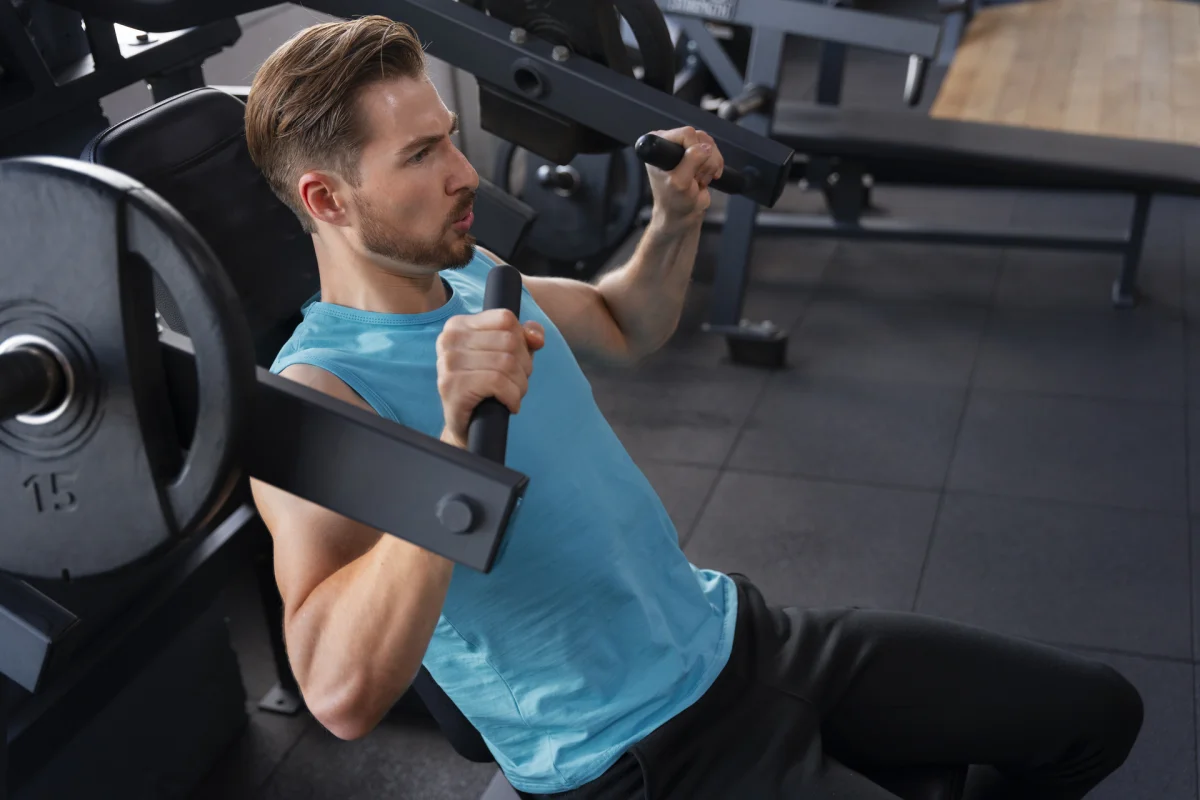 Friday, July 11, 2025
Friday, July 11, 2025Shoulder Press: The King of Shoulder Exercises in Muscle Building
The shoulder press, also known as the overhead press, is considered one of the most effective foundational exercises for the upper body. It not only intensively activates the shoulder muscles but also engages the core, triceps, and upper chest. Whether using dumbbells, a barbell, or a machine, the shoulder press is essential for anyone aiming to develop strong, defined shoulders.
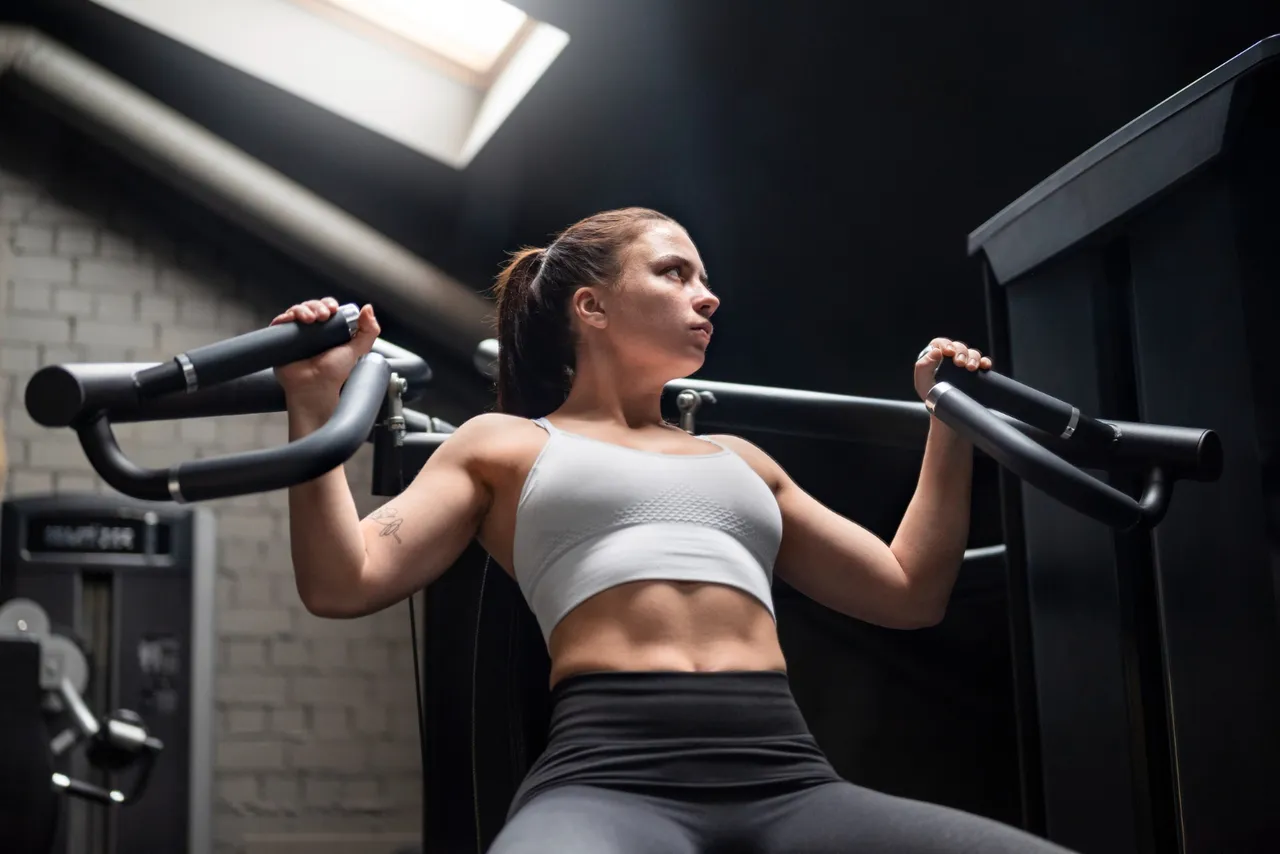
Which muscles are trained during the shoulder press?
The shoulder press primarily targets the deltoid muscle (Musculus deltoideus), especially the anterior and middle parts. Additionally, the following muscle groups are activated:
| Muscle Group | Function during the Exercise |
|---|---|
| Anterior Deltoid | Primarily responsible for lifting the arm |
| Lateral Deltoid | Assists in lifting the arm laterally |
| Triceps Brachii | Extends the arm at the elbow joint |
| Upper Chest (Pectoralis Major, Clavicular Part) | Supports the pressing movement |
| Trapezius & Serratus Anterior | Stabilize the shoulder blade |
| Core Musculature | Stabilizes the upper body during the movement |
The standing execution further challenges the core, whereas the seated variant puts more focus on isolated shoulder muscles.
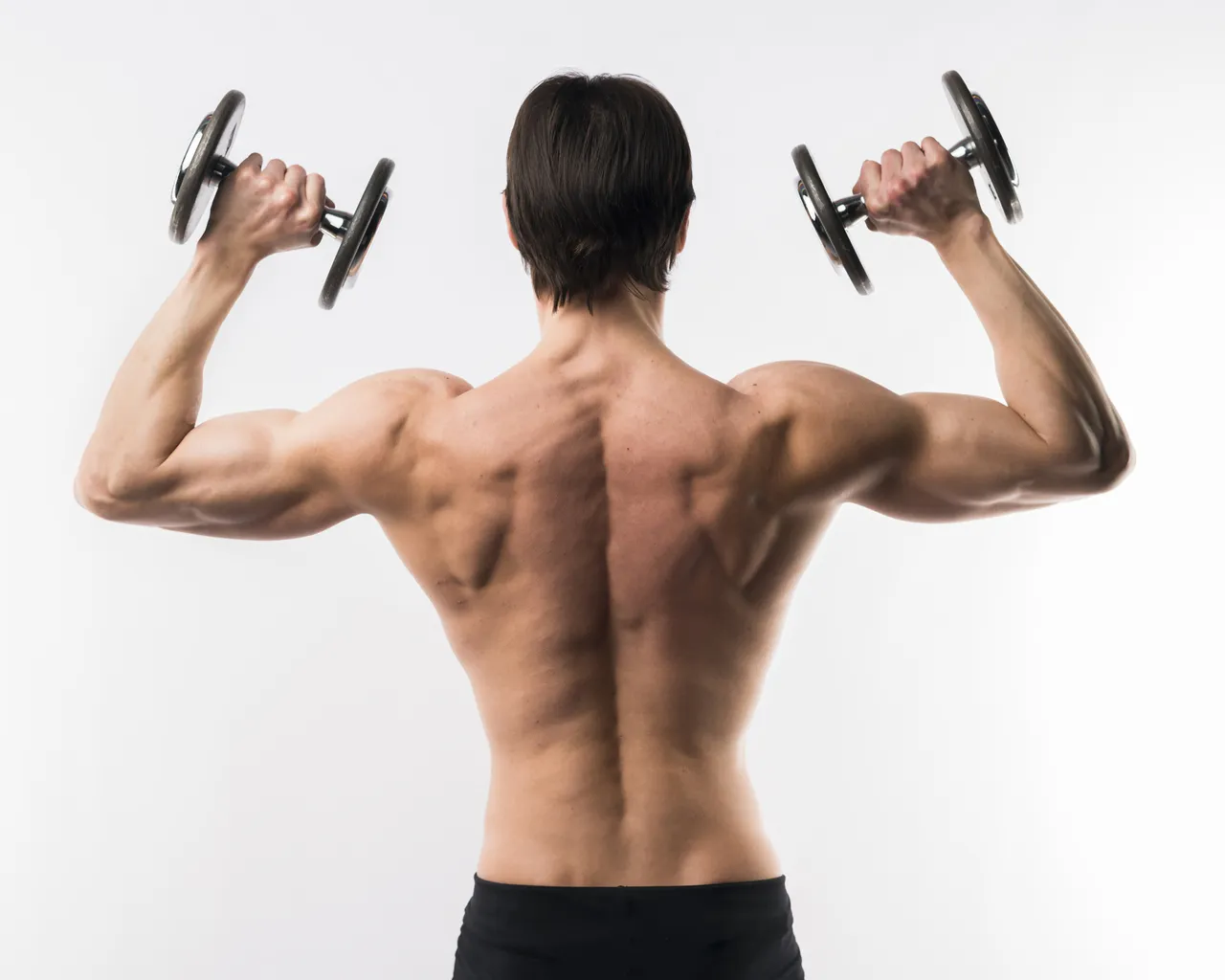
Execution of the classic shoulder press with barbell
- Starting Position:
Stand shoulder-width apart, holding the barbell at shoulder height (front rack position), elbows slightly forward.
- Build Tension:
Tighten your abs and glutes. Keep the back neutral, avoid arching!
- Press Up:
Press the barbell upwards in a controlled manner until the arms are almost extended. The bar path should slightly incline backwards, so it ends up above the head and not in front of the body.
- Lower with Control:
Lower the barbell slowly back to shoulder height. No bouncing or arching!
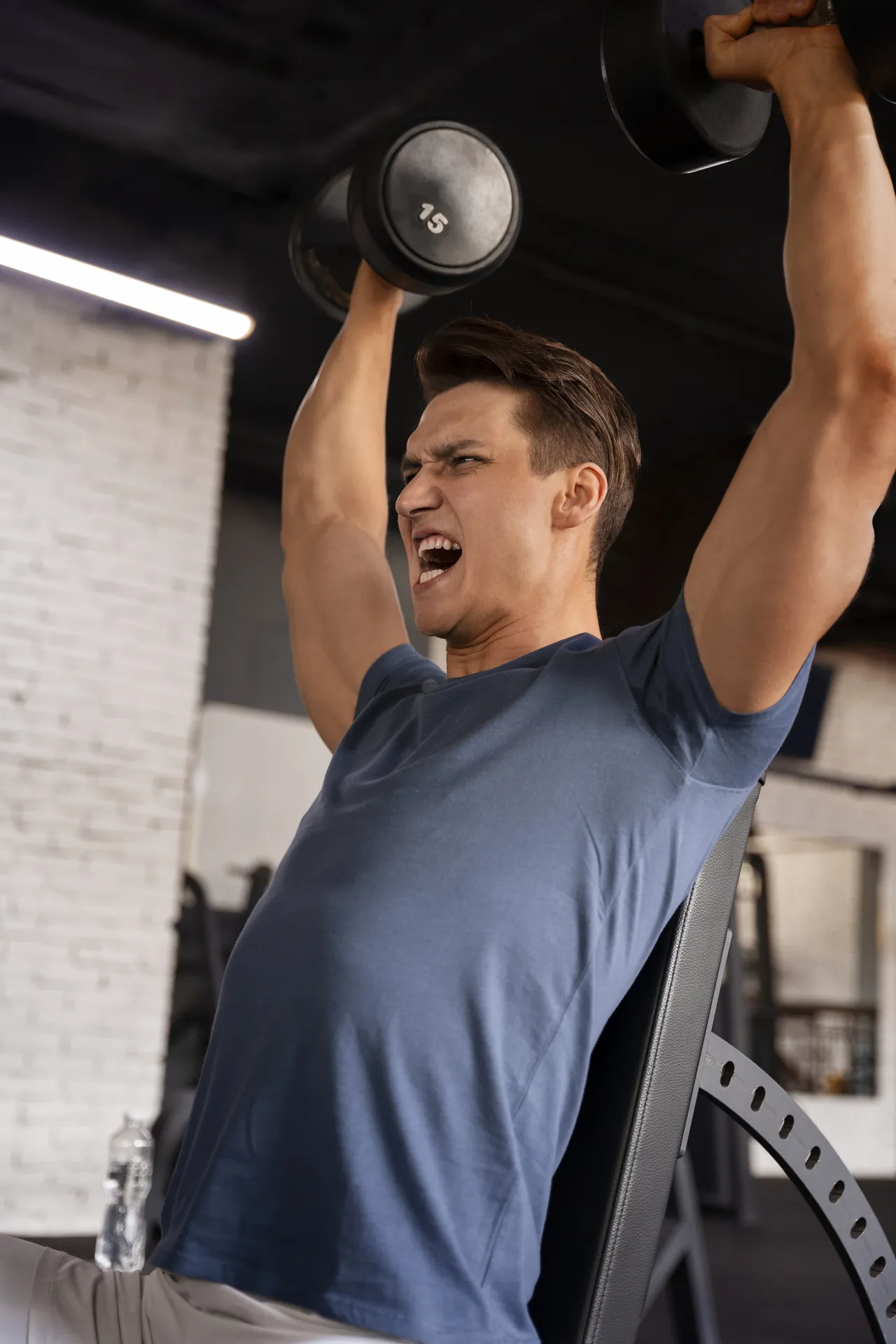
Variants of the shoulder press
| Variant | Advantage |
|---|---|
| Dumbbell Shoulder Press | More range of motion, better for joints and muscle balance |
| Arnold Press | Greater range of motion, additionally activates the anterior shoulder |
| Machine Press | Ideal for beginners, as it provides stabilized guidance |
| Seated Barbell Press | More focus on shoulders, less core activation |
| Standing Overhead Press | Functional, stronger core activation, also suitable for strength training |
| Behind-the-Neck Press | Highly controversial – can lead to shoulder injuries, suitable only for advanced |
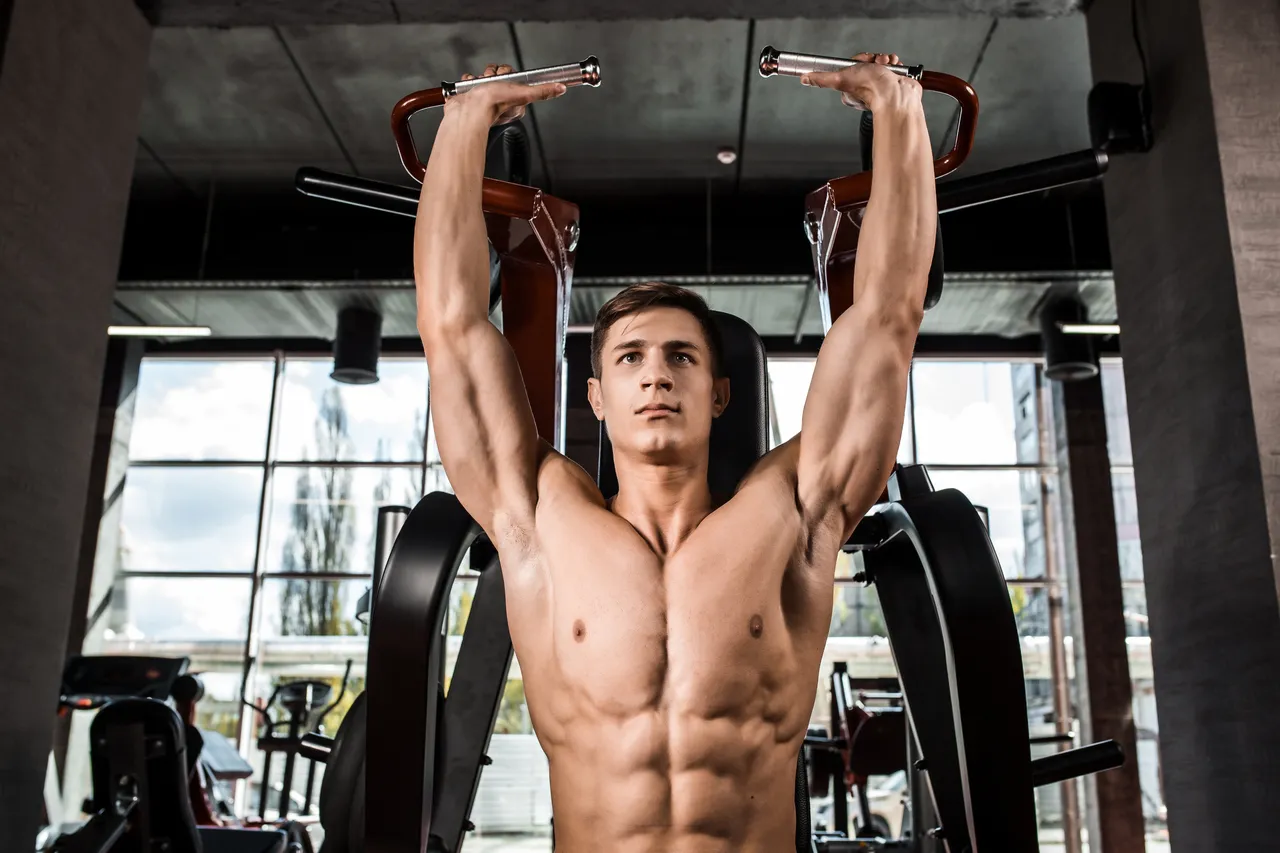
Common mistakes and how to avoid them
Arching the Back while Pressing Up:
→ Cause: Lack of core tension or too much weight
→ Solution: Reduce weight, activate the coreBarbell Lowered Too Deep:
→ Cause: Hyperflexibility or incorrect technique
→ Solution: Stop at shoulder height, not deeperUneven Pressing:
→ Cause: Muscular imbalance
→ Solution: Use the dumbbell variant and focus on clean execution- Shoulder Elevation:
→ Cause: Overloading or incorrect activation
→ Solution: Adjust weight, actively pull shoulder blades down

How often and when to incorporate into training?
For muscle building, 2–3 sets of 8–12 repetitions are ideal. Advanced athletes can also train heavier (e.g., 5×5 for strength). The shoulder press is particularly suitable for the push day in a push-pull-legs split or as part of an upper body workout.
Training Frequency:
1–2 times per week, with at least 48 hours of recovery time for the shoulders.

Shoulder Press vs. Lateral Raises: Which is better?
This question is misleading — both are essential in effective shoulder training. While lateral raises isolate the lateral deltoid, the shoulder press is a compound exercise that significantly affects other movements (e.g., bench press, handstand, throwing sports). An ideal regimen combines fundamental exercises (like the shoulder press) with isolation exercises (like lateral raises).

Scientific background
A study in the Journal of Strength and Conditioning Research (2013) compared muscle activation in various shoulder exercises. Result: The overhead press showed the highest activation in the anterior deltoid, followed by the Arnold press. The standing variant resulted in significantly higher core activation than the seated variant.
Training research also shows that free weights (barbells and dumbbells) lead to better inter- and intramuscular coordination in the long term compared to guided machines.
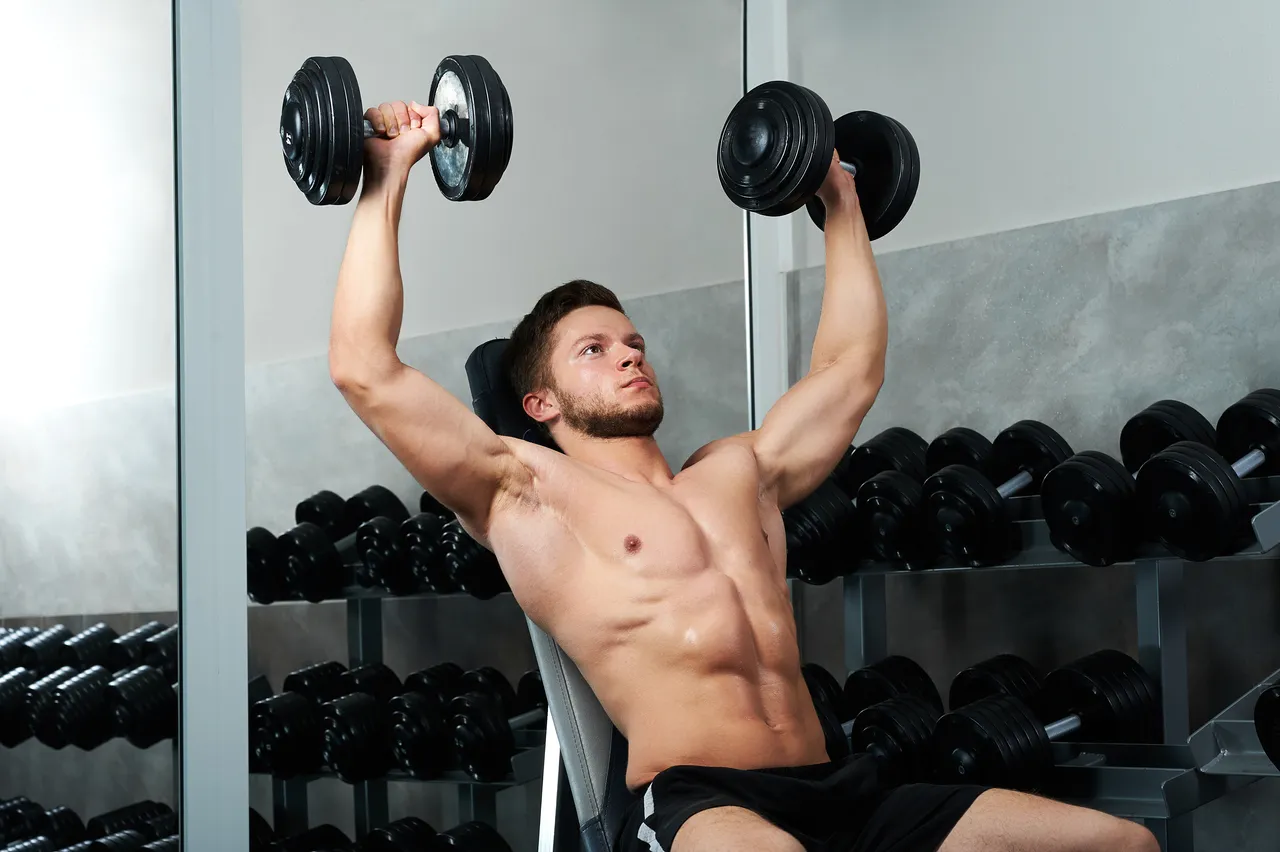
Conclusion
The shoulder press is an indispensable exercise for strong, broad shoulders. It not only promotes muscle growth but also enhances the stability and functionality of the entire upper body. Whether using a barbell, dumbbell, or machine, the correct technique determines training success and injury prevention. Combined with isolation exercises like lateral raises, it forms the foundation of a solid shoulder training routine.


